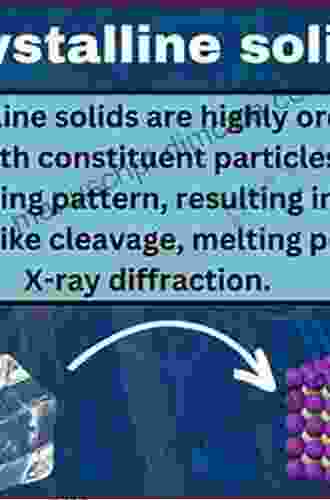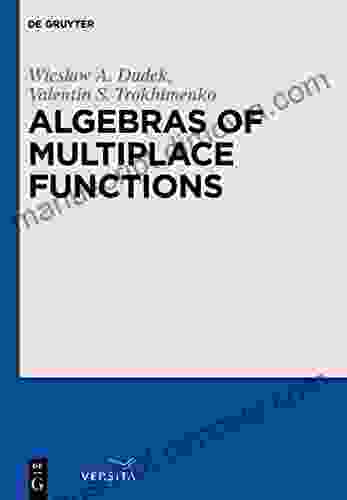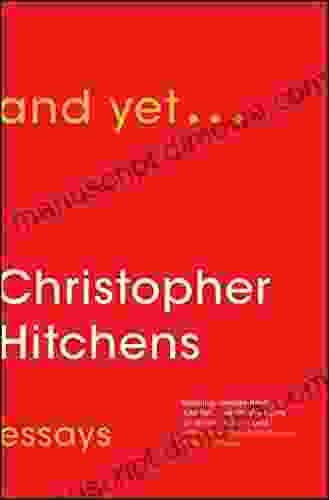Electronic Properties of Crystalline Solids: A Comprehensive Guide

5 out of 5
| Language | : | English |
| File size | : | 38208 KB |
| Screen Reader | : | Supported |
| Print length | : | 524 pages |
Crystalline solids are materials with atoms or molecules arranged in a regular, repeating pattern. This Free Downloaded structure gives rise to unique electronic properties that are not found in amorphous materials. The electronic properties of crystalline solids are essential for understanding a wide range of phenomena, from the electrical conductivity of metals to the optical properties of semiconductors.
In this comprehensive guide, we will explore the fundamental concepts of electronic properties in crystalline solids. We will discuss the band theory of solids, which explains the electronic structure of crystals. We will also examine the electrical, optical, and magnetic properties of crystalline solids. Finally, we will discuss some of the applications of crystalline solids in electronic devices.
Band Theory of Solids
The band theory of solids is a fundamental theory that explains the electronic structure of crystals. According to the band theory, electrons in a crystal are confined to move within certain energy bands. These energy bands are created by the interactions between the electrons and the ions in the crystal lattice.
The lowest energy band is called the valence band. The valence band is filled with electrons at low temperatures. The next highest energy band is called the conduction band. The conduction band is empty at low temperatures.
The energy gap between the valence band and the conduction band is called the band gap. The band gap determines whether a material is an insulator, a semiconductor, or a metal. If the band gap is large, the material is an insulator. If the band gap is small, the material is a semiconductor. If the band gap is zero, the material is a metal.
Electrical Properties of Crystalline Solids
The electrical properties of crystalline solids are determined by the band structure of the material. Insulators have a large band gap, so electrons cannot move from the valence band to the conduction band. This means that insulators do not conduct electricity. Semiconductors have a small band gap, so electrons can move from the valence band to the conduction band with the help of thermal energy. This means that semiconductors can conduct electricity, but not as well as metals. Metals have a zero band gap, so electrons can move freely from the valence band to the conduction band. This means that metals are good conductors of electricity.
Optical Properties of Crystalline Solids
The optical properties of crystalline solids are also determined by the band structure of the material. Insulators are transparent to light because photons do not have enough energy to excite electrons from the valence band to the conduction band. Semiconductors are opaque to light because photons have enough energy to excite electrons from the valence band to the conduction band. Metals are reflective to light because photons do not have enough energy to excite electrons from the valence band to the conduction band.
Magnetic Properties of Crystalline Solids
The magnetic properties of crystalline solids are determined by the electronic structure of the material. Diamagnetic materials have all of their electrons paired, so they are not attracted to magnets. Paramagnetic materials have some of their electrons unpaired, so they are weakly attracted to magnets. Ferromagnetic materials have all of their electrons unpaired, so they are strongly attracted to magnets.
Applications of Crystalline Solids
Crystalline solids are used in a wide range of electronic devices. Insulators are used in capacitors and transistors. Semiconductors are used in solar cells, light-emitting diodes (LEDs),and integrated circuits (ICs). Metals are used in wires, cables, and electrical contacts.
Crystalline solids are fascinating materials with a wide range of electronic properties. The band theory of solids provides a framework for understanding the electronic structure of crystals. The electrical, optical, and magnetic properties of crystalline solids are determined by the band structure of the material. Crystalline solids are used in a wide range of electronic devices.
We hope that this comprehensive guide has given you a better understanding of the electronic properties of crystalline solids. If you have any questions, please feel free to contact us.
5 out of 5
| Language | : | English |
| File size | : | 38208 KB |
| Screen Reader | : | Supported |
| Print length | : | 524 pages |
Do you want to contribute by writing guest posts on this blog?
Please contact us and send us a resume of previous articles that you have written.
 Book
Book Novel
Novel Page
Page Chapter
Chapter Text
Text Story
Story Genre
Genre Reader
Reader Library
Library Paperback
Paperback E-book
E-book Magazine
Magazine Newspaper
Newspaper Paragraph
Paragraph Sentence
Sentence Bookmark
Bookmark Shelf
Shelf Glossary
Glossary Bibliography
Bibliography Foreword
Foreword Preface
Preface Synopsis
Synopsis Annotation
Annotation Footnote
Footnote Manuscript
Manuscript Scroll
Scroll Codex
Codex Tome
Tome Bestseller
Bestseller Classics
Classics Library card
Library card Narrative
Narrative Biography
Biography Autobiography
Autobiography Memoir
Memoir Reference
Reference Encyclopedia
Encyclopedia Cherry Hill
Cherry Hill Howie Hellrude
Howie Hellrude Chris Sheryn
Chris Sheryn Tim Willocks
Tim Willocks David Clay Large
David Clay Large Christine Dzidrums
Christine Dzidrums Eva Fejos
Eva Fejos Holly Poe Durbin
Holly Poe Durbin Christine Rimmer
Christine Rimmer G G Melies
G G Melies Chas Stramash
Chas Stramash Cheryl Blackford
Cheryl Blackford Sky Chase
Sky Chase Jeff Dawson
Jeff Dawson Chen Kuczynski
Chen Kuczynski Christina Fisanick
Christina Fisanick Notes On Cities
Notes On Cities Patrick Sherratt
Patrick Sherratt Nia Stephens
Nia Stephens Chris Lamb
Chris Lamb
Light bulbAdvertise smarter! Our strategic ad space ensures maximum exposure. Reserve your spot today!

 Michael ChabonTechniques and Applications of Path Integration: A Comprehensive Guide to...
Michael ChabonTechniques and Applications of Path Integration: A Comprehensive Guide to... James GrayFollow ·3.7k
James GrayFollow ·3.7k Mark TwainFollow ·16.5k
Mark TwainFollow ·16.5k Anton FosterFollow ·11k
Anton FosterFollow ·11k Jamie BlairFollow ·3.1k
Jamie BlairFollow ·3.1k Dale MitchellFollow ·15.1k
Dale MitchellFollow ·15.1k Jett PowellFollow ·6.9k
Jett PowellFollow ·6.9k Haruki MurakamiFollow ·6.7k
Haruki MurakamiFollow ·6.7k Cade SimmonsFollow ·14.5k
Cade SimmonsFollow ·14.5k

 Frank Mitchell
Frank MitchellStep Onto the Dance Floor of Spanish Fluency with...
Are you ready to take a...

 Jarrett Blair
Jarrett BlairEscape into the Enchanting Realm of "The British Empire...
Embark on an Extraordinary Literary Journey...

 Gregory Woods
Gregory WoodsHitler Olympics: The 1936 Berlin Olympic Games
The 1936 Berlin Olympic Games...

 Philip Bell
Philip BellThe British Empire of Magic and the Dark Knights King: An...
In the tapestry of literary...

 Jacob Hayes
Jacob HayesPerilous Journey of Danger and Mayhem: A Thrilling...
In the untamed wilderness,...
5 out of 5
| Language | : | English |
| File size | : | 38208 KB |
| Screen Reader | : | Supported |
| Print length | : | 524 pages |












